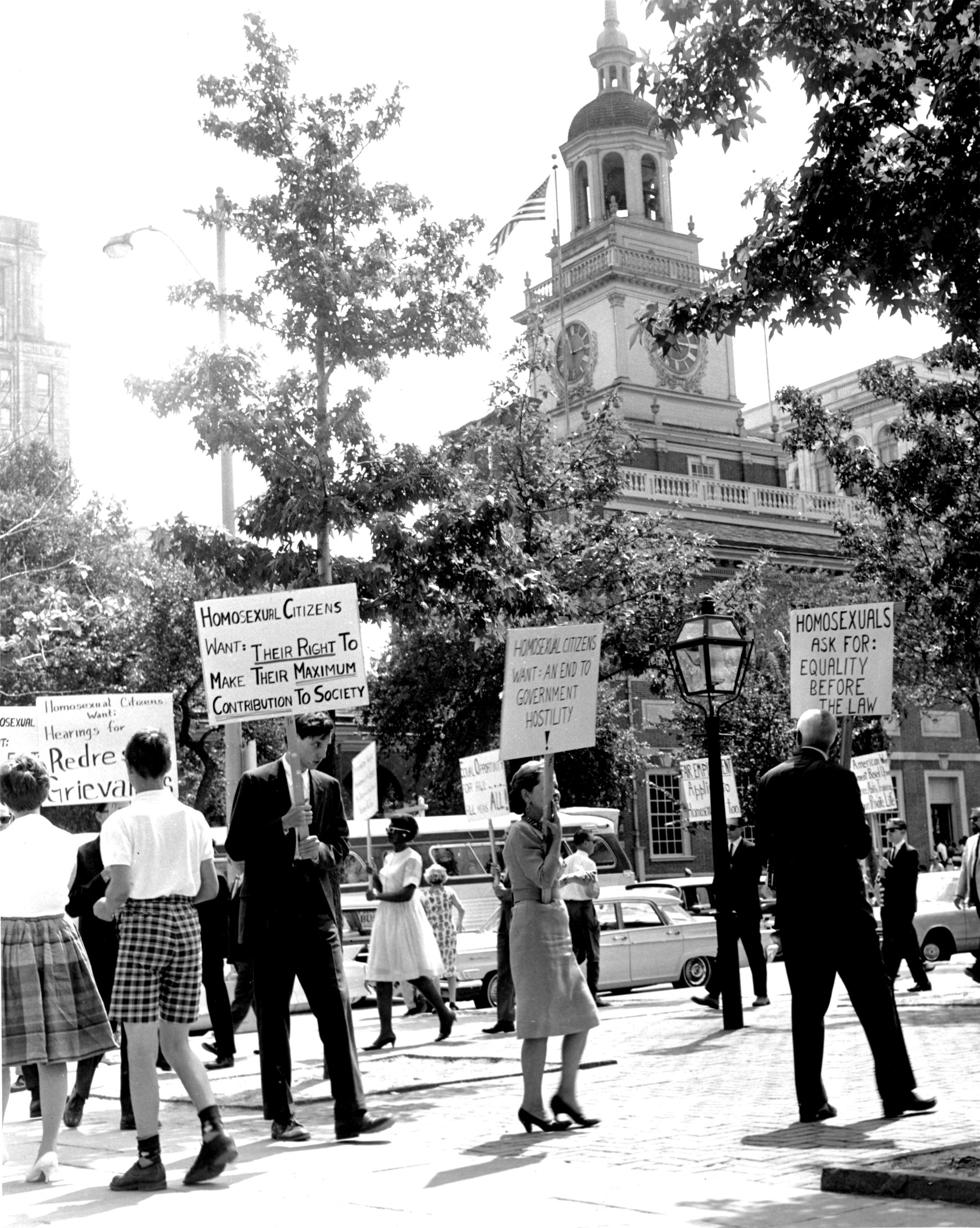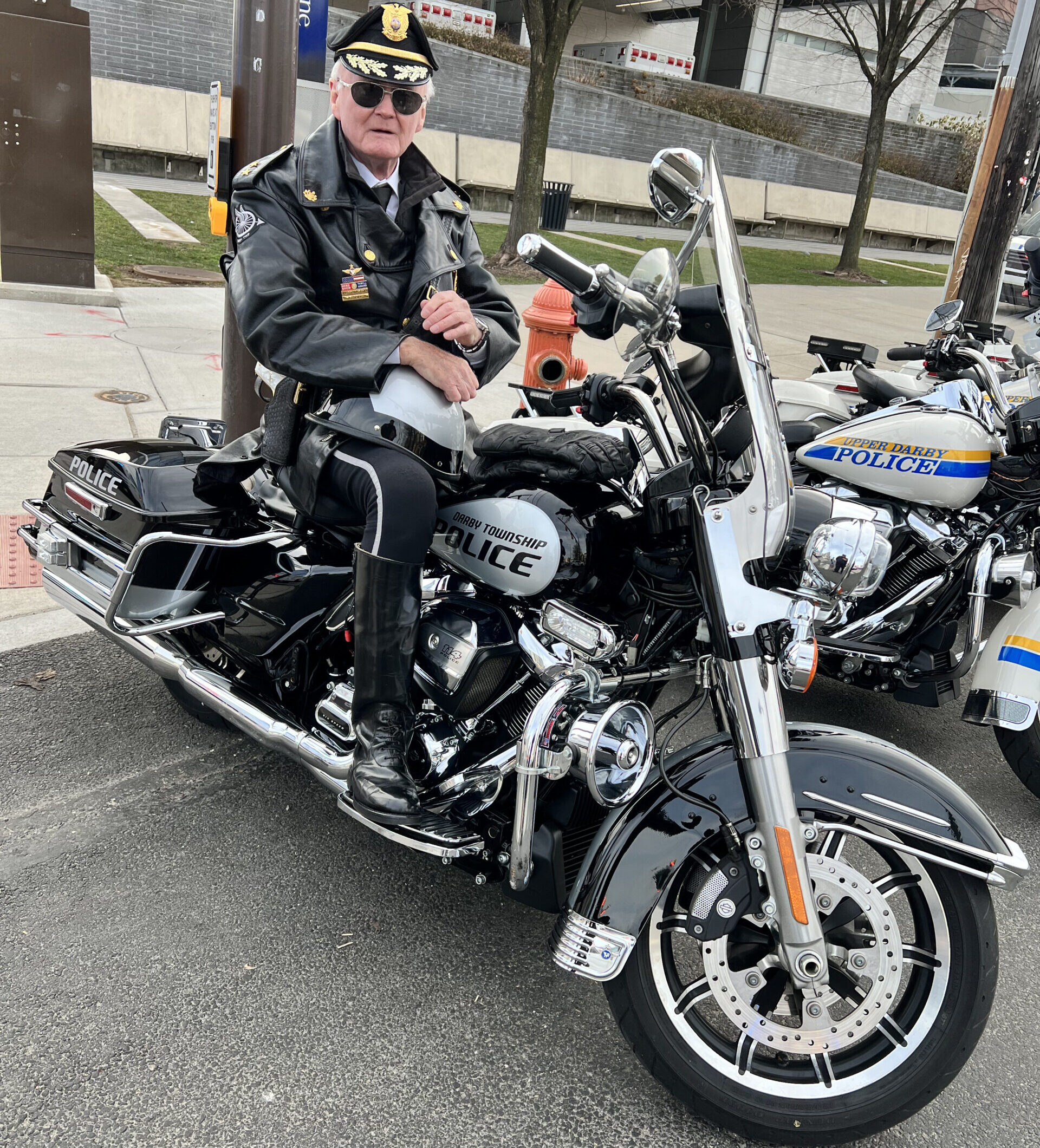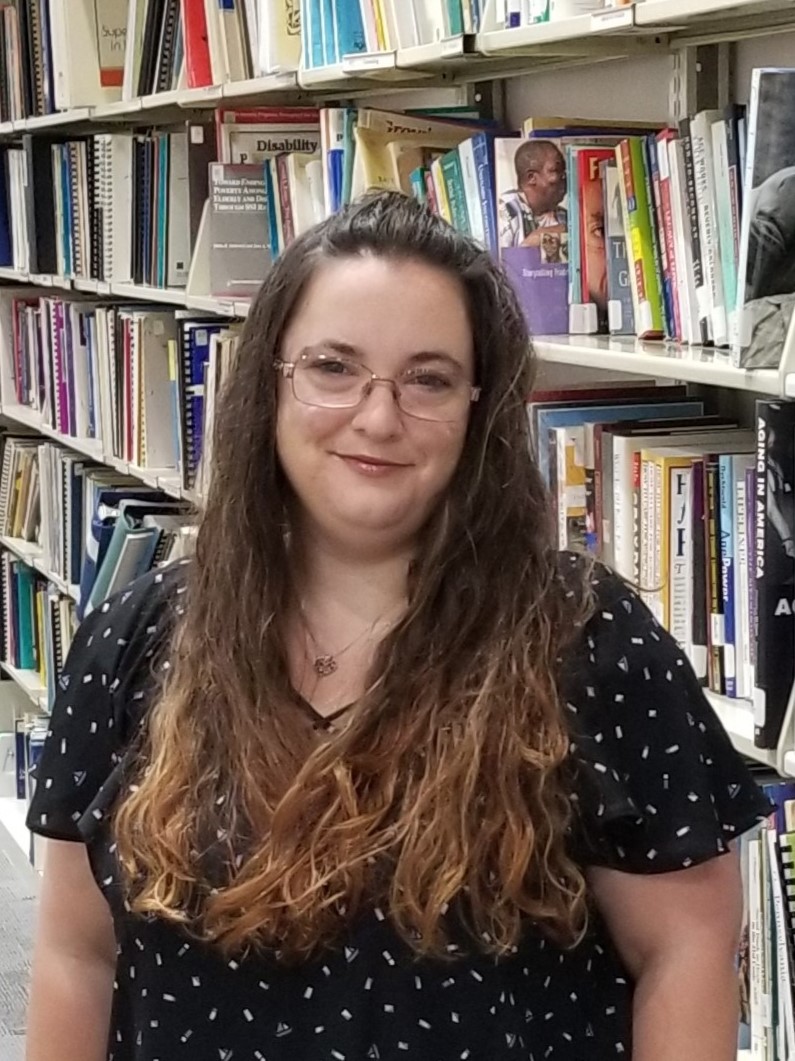The history of Philadelphia’s gay rights movement
By Mary Anna Rodabaugh
On June 28, 1969, New York City police raided the Stonewall Inn, a gay club in Greenwich Village. For six days, neighbors and Stonewall customers rioted and clashed with law enforcement. These events served as a major catalyst for the LGBTQ+ civil rights movement across the United States. However, Philadelphia’s history of LGBTQ+ civil rights activism began prior to the Stonewall rebellion.
The first documented movement occurred on April 25, 1965 at Dewey’s Diner, a popular establishment for LGBTQ+ youth in the Rittenhouse Square neighborhood. The waitstaff at Dewey’s was refusing to serve customers who they perceived to be gay, lesbian or not dressed according to their sex. Customers quickly took notice of this discriminatory behavior and became angry at the mistreatment of these individuals. After being asked to leave, three teens took a stand by staging a sit-in at the restaurant. They remained there until they were arrested.
For five days, members of the Janus Society, a local LGBTQ+ political group, led a protest outside of Dewey’s Diner. One week after the teens’ arrests, a second sit-in occurred. It lasted until Dewey’s resumed serving all patrons regardless of appearance or sexual orientation.
The first Reminder Day
Washington Square West resident, John James, 79, was living in Washington D.C. when he read an article about civil rights activist Frank Kameny and the D.C. branch of the Mattachine Society, a national LGBTQ+ rights association. In
1957, Kameny was fired from his federal job with the United States Army Map Service for being gay. After being barred from future federal government employment, Kameny, along with LGBTQ+ rights pioneer Barbara Gittings, spearheaded some of the nation’s earliest LGBTQ+ civil rights demonstrations.
“There was a project coming up. It was a march on Independence Hall on July 4, 1965,” James said. “I decided I’d like to go, so I did.”
It would be James’ first visit to the City of Brotherly Love, a place he would call home 36 years later. He boarded a bus on that hot summer day and selected a sign to carry during the protest. It read: “Homosexual citizens want: Their right to make their maximum contribution to society.”
The first Reminder Day Demonstration had a very strict dress code. Kameny felt strongly that LGBTQ+ social activism should be about acceptance, and no other issues. He made sure all demonstrators looked presentable and respectable.
“We were instructed to be the kind of people you would meet at the office,” James said. “Men wore suits and ties. Women wore business attire.”
James demonstrated alongside about 40 other protesters for two hours, taking a break only to buy ice cream from a nearby truck. There was no organized opposition or mainstream media covering the event. Despite this, he was nervous about being recognized and losing his job as a computer programmer at the National Institutes of Health.
“I could have been fired if they found out I was gay,” he said.
Thankfully, he went undetected.
Similar demonstrations, known as The Annual Reminders, took place at Independence Hall every July 4 for the next three years. James did not participate in the subsequent demonstrations, but eventually found other meaningful ways to contribute to the LGBTQ+ community. In 1986, he published updates on experimental-drug trails in the AIDS Treatment News (ATN), which became a beacon of news and information for the LGBTQ+ community for more than 20 years.
The Gay Rights Alliance
In 1971, the Gay Activists Alliance (GAA), originally founded in New York City, formed in Philadelphia. More than 400 people joined that first year. Members worked tirelessly to impact local legislation and protect LGBTQ+ individuals from discrimination. The group sponsored dances, social events and social justice programs for the LGBTQ+ community. The GAA also pioneered the Gay Switchboard Hotline and the Eromin Center to provide mental health services to individuals who were LGBTQ+, as well as helped to develop Philadelphia’s first gay newspaper, the Gayzette.
In 1972, GAA worked alongside the Homophile Action League to organize Philadelphia’s first gay pride march, from Rittenhouse Square to Independence Park. Ten years later, on Sept. 9, 1982, local legislators passed the Philadelphia Gay Rights Bill, which outlawed anti-gay discrimination in employment, housing and public accommodations.
LGBTQ+ activism today
After an attack against two gay men in Center City took the media by storm in 2014, the City of Philadelphia passed an ordinance to recognize attacks based on gender identity or sexual orientation as hate crimes.
According to the City of Philadelphia’s Action Guide on LGBTQ+ protections, Philadelphia is consistently recognized as one of the most LGBTQ-friendly cities in the country.
Today, Philadelphia celebrates the annual Philly Pride Parade and Festival, as well as Outfest, the largest national coming out day in the world.
Mary Anna Rodabaugh is a writer, editor and writing coach.
PHOTO CAPTION: A group of activists, including Philadelphian John James (front left), held the first organized LGBTQ+ rights demonstration at Philadelphia’s Independence Hall on July 4, 1965. (Mattachine Society, Courtesy of The Pew
Center for Arts & Heritage)




